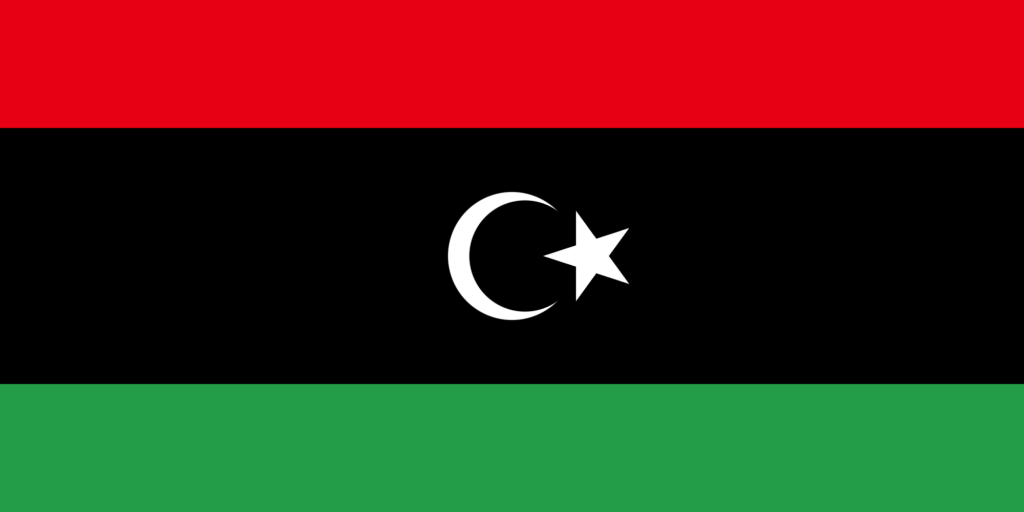On December 24, 1951, the North African country of Libya gained its independence from Allied occupation following World War II. It was previously an Italian colony. This day is now widely celebrated as Libya’s independence day.

A map of Libya (from the CIA’s World Factbook). Most familiarly, Libya has a border with Egypt to the east and a coastline on the Mediterranean in the north.
However, the Kingdom of Libya only lasted from 1951 to 1969. After a military coup, the following dictatorship replaced the flag with a solid green flag until its fall in 2011. The old flag, which is what this article is about, was reinstated in 2011:

The colors of the flag can have several different interpretations. However, the crescent and star can reliably be traced back to Islam, as Libya is an almost entirely Muslim country. As for the colors, it’s useful to note that although the red, black, and green are often used in relation to Africa and Africans, that is not the origin of this flag.
Two ways the colors on the flag can be explained include one explanation involving the country’s regions (Fezzan, Cyrenaica, and Tripolitania) and a more symbolic definition:
- The red on the top of the flag might symbolize sacrifice of the Libyan people, especially from colonial rule.
- The black might refer to the historical banner of the Senussi, a clan located in Libya that came into power around the time of its independence. This banner only contained the black background and the white star and crescent.
- The green, as is common among many countries, possibly refers to the hope and prosperity of future generations in the country.
Gaddafi’s solid-green flag is certainly some interesting flag history trivia, but Libya’s modern flag is a staple of their culture and tells a story!
Leave a Reply